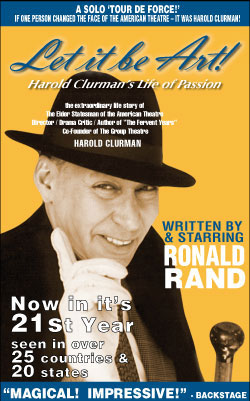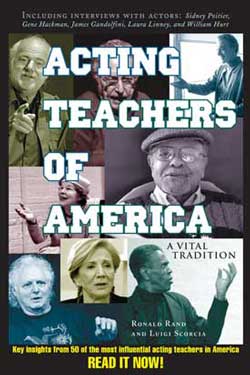Coco Karol
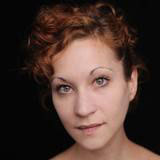 Has been making dance and performing in New York for over a decade. Ms. Karol began her professional career with the Boston Ballet, finding her artistic voice with Marcus Schulkind. She is a member of Misnomer Dance Theater, danced for Cherylyn Lavagnino Company and Christopher Williams, and has done projects with Christy O'Harris and Bill Young, Chloe Douglas, Jose Navas, Steven Petronio, and Wanda Gala. Ms. Karol has worked closely alongside musicians such as Bjork, Ryan Lott (Son Lux), Koh Ohtera, Daniel Carter, and Ear to Mind collective; and artists including photographer Steven Sebring, sculptor Eve Bailey, architect Marcos Zotes and designer Louda Larrain. Her work has been shown internationally as well as across New York at Symphony Space, BAX, Ibeam, Spectrum, D.U.M.B.O Under the Bridge Arts Festival, New York Studio Gallery, Galapagos, Brooklyn Ballet, Death By Audio, in the AUNTS collective’s shifting venues, as well as at some unique community events for neighborhood youth and gardening, including The Petri Space, a live work performance venue she built and ran in Bushwick, Brooklyn. Recently, Ms. Karol has begun exploring dance for camera and started Red Sole Productions, a small production company for dance-based media. She has also been developing workshop-to-performance models that cultivate embodied listening and moving, in order to create a platform for dialogue and facilitate a space for discovery among artists or populations seeking social movement. www.finding coco.net
Has been making dance and performing in New York for over a decade. Ms. Karol began her professional career with the Boston Ballet, finding her artistic voice with Marcus Schulkind. She is a member of Misnomer Dance Theater, danced for Cherylyn Lavagnino Company and Christopher Williams, and has done projects with Christy O'Harris and Bill Young, Chloe Douglas, Jose Navas, Steven Petronio, and Wanda Gala. Ms. Karol has worked closely alongside musicians such as Bjork, Ryan Lott (Son Lux), Koh Ohtera, Daniel Carter, and Ear to Mind collective; and artists including photographer Steven Sebring, sculptor Eve Bailey, architect Marcos Zotes and designer Louda Larrain. Her work has been shown internationally as well as across New York at Symphony Space, BAX, Ibeam, Spectrum, D.U.M.B.O Under the Bridge Arts Festival, New York Studio Gallery, Galapagos, Brooklyn Ballet, Death By Audio, in the AUNTS collective’s shifting venues, as well as at some unique community events for neighborhood youth and gardening, including The Petri Space, a live work performance venue she built and ran in Bushwick, Brooklyn. Recently, Ms. Karol has begun exploring dance for camera and started Red Sole Productions, a small production company for dance-based media. She has also been developing workshop-to-performance models that cultivate embodied listening and moving, in order to create a platform for dialogue and facilitate a space for discovery among artists or populations seeking social movement. www.finding coco.net
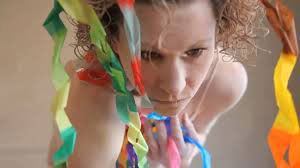
What do you have coming up?
I’m doing a low residency part of a master’s program, in Virginia doing graduate work, then I go to Germany, and then onto Iceland to connect with an architect I have worked with in the past. When I return to New York, I hope to have a small nugget of new work. I’m working on collaboration components of puzzles and an installation. I’ll also be working on a topography project that will be available to be seen, which might be going to festivals and then I’m planning to go to Istanbul in the fall to teach.
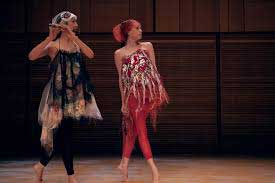 Congratulations on your unique collaboration with Luna Cholong Kang during her concert at Concert Hall. What was it like working with Ear to Mind (founded by musician Inhyun Kim) which produced the event, and creating the dances around Luna Cholong Kang, and with her, while she played the flute?
Congratulations on your unique collaboration with Luna Cholong Kang during her concert at Concert Hall. What was it like working with Ear to Mind (founded by musician Inhyun Kim) which produced the event, and creating the dances around Luna Cholong Kang, and with her, while she played the flute?
It’s the third piece I have worked in performances through Ear to Mind. The first two were all live art. The idea was a choreographer-composer collaboration; to explore the idea of music to be seen and dance to be heard. With each iteration, we explored more. Inhyun asked if I would set the piece with Luna. It began as a solo for her and we worked together getting her comfortable with movement. She followed with the score, and a duet took shape. We opened it up as I explored more and more.
 There is a moment in creative processes where I either keep going or I choose to break it open in a different way. We basically broke everything we had set and opened what was underneath. We couldn’t get to that point until we had been moving in the studio for a while. It happened in the moment when Luna said: “I want to do it. I want it to be more powerfully extreme, intense and dramatic.”
There is a moment in creative processes where I either keep going or I choose to break it open in a different way. We basically broke everything we had set and opened what was underneath. We couldn’t get to that point until we had been moving in the studio for a while. It happened in the moment when Luna said: “I want to do it. I want it to be more powerfully extreme, intense and dramatic.”
It also happened the moment when I listened to her, and I put down any preconceived notions I had about anything. I thought she was comfortable with it, so I said: “Okay” and we started moving. I said: “What if you laid down on the floor? Can you still play from there.” It was about my getting closer to her and balancing on her. It was a very intense process for her.
There is that special space where a flute rests in the arms of the musician; an intimate space between the shoulder, a very vulnerable place. And for Luna to let me put my legs and arms through it; it took a lot of courage on her part. She was very willing to explore it with me. With any process you encounter your fears, and once we let go, we realized what waiting for us.
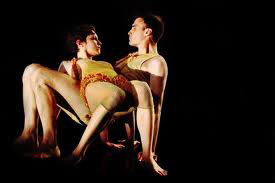 Can you talk about what the process of collaboration means for you?
Can you talk about what the process of collaboration means for you?
Basically, it’s the foundation for all my work, which is rooted in the question: What am I learning now. So I make my work mostly collaborative. In that process there are collaborations with artists who have different mediums or different modes, and through that process there is always learning going on, always speaking in different languages and sometimes literally.
What was interesting in the process with Luna was to learn to explore the ways we could learn together. Luna seemed to feel she had to learn the movements because then she could move, and she needed to know them before she could move, even while playing her music.
I don’t play an instrument. But I could play “through the motion.” I tried to wrap my mind around it a different way of learning. With Inhyun and with Luna, we worked to bridge the language of music. I also don’t’ read music. I painted my score and divided it into color blocks so I could read the colors, so we could follow along with each other and different sections arose with the different sections of the score throughout the process. There was a third part of the artistic process.

The score, which was written by Oliver Knussen, had stage directions in it, and we choose to liberally and literally interpret, decipher and embody the stage directions. For example, one of them was histrionic, so that sort of that language left a lot for interpretation. Or it could just say: walk to position 1 or 2 or it was a grimace so if Luna didn’t want to grimace, I did it.
It would come out of nowhere and I loved it.
How were you first introduced to Inhyun Kim?
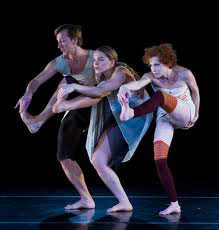 I was performing in a little café; I didn’t know Inhyun. A friend had invited me to perform there and it was a tiny little space. I did my "Coco stuff," but at one moment the stage was so small, I couldn’t see the edge and I fell and took my whole PA system down with me. There was a dead quiet stop. I got up and Inhyun came up to me and told me she wanted to work with me. You never know. I have been very lucky. People have approached me after shows. I’ve gotten connected in ‘organic’ ways. I rarely said no. I feel ‘work begets work.’ It’s kept building. I also put myself into situations where I’m engaging with other art forms; film has been an inspiration to me.
I was performing in a little café; I didn’t know Inhyun. A friend had invited me to perform there and it was a tiny little space. I did my "Coco stuff," but at one moment the stage was so small, I couldn’t see the edge and I fell and took my whole PA system down with me. There was a dead quiet stop. I got up and Inhyun came up to me and told me she wanted to work with me. You never know. I have been very lucky. People have approached me after shows. I’ve gotten connected in ‘organic’ ways. I rarely said no. I feel ‘work begets work.’ It’s kept building. I also put myself into situations where I’m engaging with other art forms; film has been an inspiration to me.
The costumes seemed to be another important part of the program.
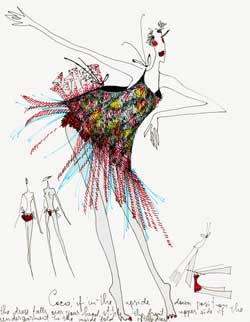 The collaboration with Luna and the costumes we wore were an important part of the collaboration. The costume designer, Louda Larrain, lives in Hawaii and we worked over Skype to form the costumes. She had an idea because of the choreography. Together we had the idea for masks and then we dropped it for a while and then came back to it. After the development period we came full circle. An amazing thing happened when no one trusted the idea of what the costumes could be, I said trust me and I had to trust myself with any artistic fears I was feeling, and wait till we saw them on the stage. They looked amazing. I do believe the costumes and Louda’s designs raised the artistry to a high level. I’m very grateful to collaborate with such a costume designer as Louda, and to have all three things come together. It reminded me, like the Ballet Russe when everything came together for them.
The collaboration with Luna and the costumes we wore were an important part of the collaboration. The costume designer, Louda Larrain, lives in Hawaii and we worked over Skype to form the costumes. She had an idea because of the choreography. Together we had the idea for masks and then we dropped it for a while and then came back to it. After the development period we came full circle. An amazing thing happened when no one trusted the idea of what the costumes could be, I said trust me and I had to trust myself with any artistic fears I was feeling, and wait till we saw them on the stage. They looked amazing. I do believe the costumes and Louda’s designs raised the artistry to a high level. I’m very grateful to collaborate with such a costume designer as Louda, and to have all three things come together. It reminded me, like the Ballet Russe when everything came together for them.
You’ve said you found your artistic voice with Marcus Schulkind.
Marcus very dear to me. He still teaches and creates in Boston and was a member of the Lar Lubovitch Dance Company and danced in New York in the 1970’s. I was on the fast track to be a part of the corp de ballet of a regional dance company. I was apprenticing with Boston Ballet and was the lowest of the corp.
But there were hints that I had something more that I wanted to do. My first choreography was at thirteen when I created a duet for a presentation. I had created a duet for two dancers with music by Jimmy Hendrix mixed with Gregorian chants. But they didn’t want to show it because of Jimmy Hendrix music. So I went from that, and started dancing with Marcus in his studio in Boston. I learned a solo he created. He just opened my eyes to a really liberated form of movement and what an artist can be. I had never felt that kind of the thing before until someone gives you the permission. He encouraged me to apply for a pre-college semester for Juilliard. I had no clue about it, but I sent in a tape of my work, and I got in!
I came to New York City for the first time; it was the summer before my senior high school year. At Juilliard my eyes were opened. I was just eating up the city. The artistic saturation, going to MoMa, even the graffiti around the city. And what I was exposed at Juilliard, led me to see other types of dance and dance companies; everything was so amazing to me!
Can you describe about how you draw upon from your practices and training in Butoh, Ballet, Buddhism, improvisation, martial arts, poetry, and yoga.
What I found is a through line – this kind of sacred sense of transformation in Butoh and ballet, in Buddhism’s magic, in the forms of dance that really grab me; there’s a type of transformation that can be subtle. Emerson wrote about metaphor and metamorphosis placing two things that wouldn’t necessarily be together and a change occurs. A metamorphosis occurs and meaning comes. It doesn’t necessarily have to be movement-based. I was horrible as a Latin student but I fell in love with Ovid’s Metamorphoses, and it’s always stuck with me
You have also danced for Cherylyn Lavagnino Company and Christopher Williams, and have done projects with Christy O'Harris and Bill Young, Chloe Douglas, Jose Navas, Steven Petronio, and Wanda Gala.
Cherylyn’s was a contemporary/classical ballet company, and that’s what it was for me. It was a great ballet experience. It was very dear to me. She created her movement on her dancers. It was a gift to have fresh air in the ballet, so I held onto it for a long time.
It was a different dance experience with Christy’s company. We were two different ‘pods.’ We have a unique artistic relationship.
I felt a real sense of being irreplaceable which made it a unique experience as a dancer. I felt as if I was contributing something to the work. Christy’s work is very quirky.
When I dance for other people, it’s been in concert settings. My own work tends to be on the outskirts of the concert dance world. It’s nice to have a connection to the stage and do installation and gallery work.
You’ve also been exploring dance for camera and started Red Sole Productions, a small production company for dance-based media.
It’s still in its infancy. I’ve done two films, one of which is in production. It’s a labor of love, a topography project.
I also did a ‘Jack the Ripper’ dance film which was a film for a book called Ripped. I thought it was a very brilliant book, which travels back in time. It was really wild, and it was really a lot of fun
Red Sole Productions will hopefully grow to support dance pieces and media. For now, it’s for my own work. I don’t see myself managing other people’s work. There’s a dimension of film and media work that I would like to explore as well as photography, so we’ll see where it goes.
How did you develop your ability to listen as well as you do?
I think I’m extremely sensitive to listening to people, their expression and their movements. When I was in second grade another student stabbed a pencil in my ear and burst my ear drum. The inner ear deals with your balance. After that, I had a lot of special auditory weird sounds in space. Luckily it healed. I still wonder if that’s what contributes to my being so sensitive to sounds. I also listen well to people and pick up on what someone is saying beneath what they’re saying and beneath what they’re doing.
But I think you’re touching a question that I keep asking myself. I keep exploring many different layers of listening. Even a piece like “Masks,” when I move to it I hear it an entirely different way. When I look at artwork or abstract expressionism, there’s a form of listening held in the spaces of tension within the frame and colors and the moment, and I think we also listen to our bodies when we really begin go deeply kinesthetically. We access parts of our nervous system that are either heightened or softened,
Two weeks ago I did six days on a silent meditation retreat. That level of listening, the ways you hear and see heightens the senses; it’s really of interesting to me. When I taught a workshop in San Francisco, I called it The Third Ear, and it was for orchestra musicians. We went deeply to find more ways to listen with the body and the ear.
You have written: “These limitations create a puzzle, whose moment-to-moment solutions are subsequently the next piece of the puzzle, ad infinitum. Likewise, music, silence, and sound and play important roles in all my work, as I try to engage noise as having a physical presence or a palpable absence in space.”
I think the nature of the puzzles is inherent is what we do. When I create a solution, I create the next problem and necessarily so. I use the analogy that you’re before a cliff, and you’re building a ladder and you take the rung beneath you and put it above and in order to keep going. You have to create problems to come to a solution. When you create a piece of work it’s not without resolution. It leaves you with a question that keeps the train of thought going.
A very beautiful moment in my life occurred when my grandmother pointed out a painting of a woman which had her back to us. She said what was so fascinating to her was you didn’t know what she was doing, so it drew you in. The painter hadn’t revealed it. So I thought that was fascinating. I really love O Henry stories and the twist that comes, they leave you to still come closer.
What happened at the end of “Masks,” was she was still growing, the answer doesn’t get answered in a clear way, so everyone can insert their own stories.
What led you to decide to teach and how did you develop your particular way of teaching?
Growing up I was very shy. I loved to perform but I was really not a speaker and I didn’t get up and speak to groups. As you get older as a dancer, you find out what your practice is and the classes you take, and those you encounter, coming in contact with other techniques can be powerful, and helps you to find your voice.
It seems a very simple a realization that I could teach the way I wanted to. It didn’t have to be anything else and I didn’t have to ask the students to be anything else, for it be like a meditative way kind of restorative and creative learning – that they come from their own place.
So I’m still learning. What excites me is what I experience at the end of the class. I teach and the dialogue I give them creates a space whether in words or in writing. What happens and how they integrate their experience has been so powerful for me. I never expected the level of depth right after a movement experience to occur. From there it’s opened a lot of questions relating to the potential of how we really connect with others and maybe the potential for social movement as a group or as a community to a type of listening that can really only occur.
Until you’ve shed some layers and go to the body the level of decision-making don’t come that comes when you are doing it moment-to-moment. In improvisations there’s a lot of space that’s created.
I’m still learning a lot about teaching, learning how to learn. You don’t always have to know when you start. Everyone can learn as you learn.
What led you to create what you call ‘Soapbox,’ and how does it work?
It began as a way of playing out some ideas, to get a sense of what it could become. I’m inspired by the opportunity to improvise. There are a lot of issues in my field and I wanted explore private space, public space, performance and social movement, particularly how community and society can rise up and support ways in creative problem-solving.
Artistic expression has really been essential in every movement or performance of protest. I’m interested all the questions that are being asked right now. I’m really interested in that dialogue. I don’t have any answers but when you get people moving and you give them permission to really speak without words, you can sometimes access forms of expression an connect with each other in a compassionate way.
By being in a space with others, lines get blurred, and we become people, bodies, mothers, sisters – we in a live moment and that can bring us to a deeper level of compassion. It’s so profound to me, above all the philosophical ideas and all of the terms that can get in the way. The fact that movement can bring us to a level of compassion beyond the moment is fascinating to me. Even this conversation in the space, we have healthy boundaries, there’s much more freedom taking place.•























